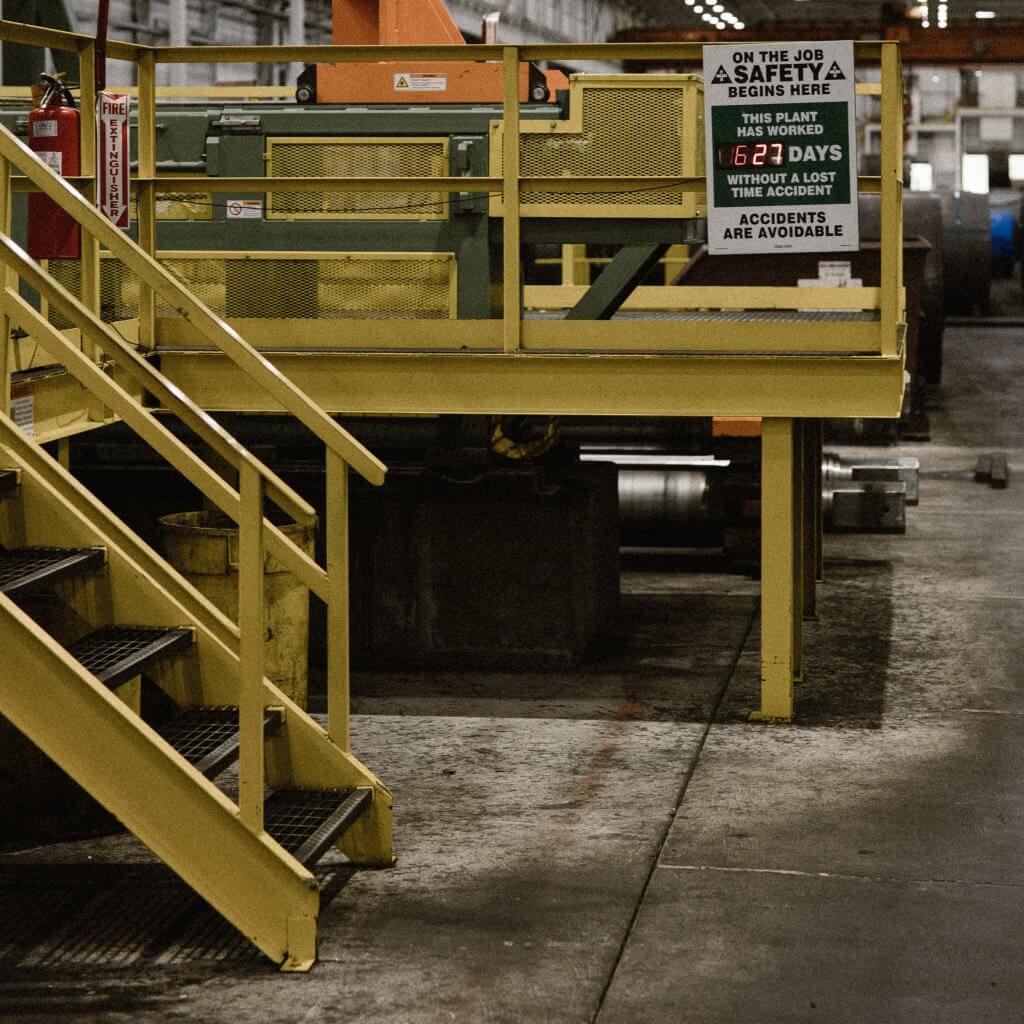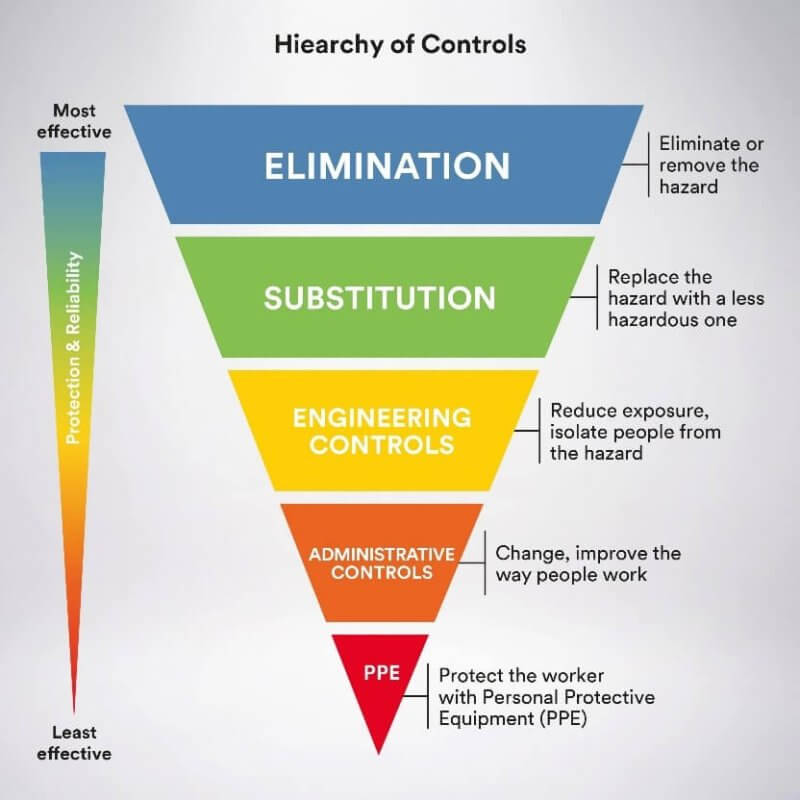
Hierarchy of Safety Controls
A ranking methods used to protect workers from occupational hazards and exposures.
According to the National Institute for Occupational Safety and Health (NIOSH), controlling exposures to occupational hazards is fundamental in protecting workers. And, the hierarchy of controls (see image below) has been used to help determine the effectiveness of these controls in keeping people safe.

Basically, the methods at the top of the graphic (Elimination and Substitution) are potentially more effective at reducing risk and more protective than those at the bottom (Administrative Controls and PPE). Following this hierarchy normally leads to the implementation of inherently safer systems in which the risk of illness or injury has been significantly reduced.
Robert Erion, Project Manager and Environmental Health & Safety Manager at our Minneapolis, MN locations, shares some examples related to the risks of use of a hazardous chemical to explain the hierarchy of controls:
- Elimination: Use a method that removes the use of the chemical
- Substitution: Replace the chemical with a less-toxic chemical
- Engineering Controls: Use safeguarding that would keep the recognized hazard from touching the employee
- Administrative Controls: Implement job rotation to lessen the time an employee is exposed to the chemical
- Personal Protective Equipment (PPE): Use gloves and safety goggles to put a barrier between the body part(s) exposed to the chemical
We can use the hierarchy of controls when analyzing our occupational injuries and illnesses, especially at the end of the year when we have enough information to find patterns in our reporting.
- Which injuries occurred most often?
- What was the root cause of our most frequent incident?
- What methods of control are we using?
Elimination and substitution are the most effective methods of reducing hazards, but they’re also the most difficult to implement. Our leading indicator practices, like identifying poka yokes and near miss reporting, can help us find ways to utilize the most effective control in our effort to reduce incidents and injuries throughout the year.
For more information, visit the NIOSH page for Hierarchy of Controls or reach out to your Safety Representative to discuss.
Safety First. Always. And, it starts with me.
